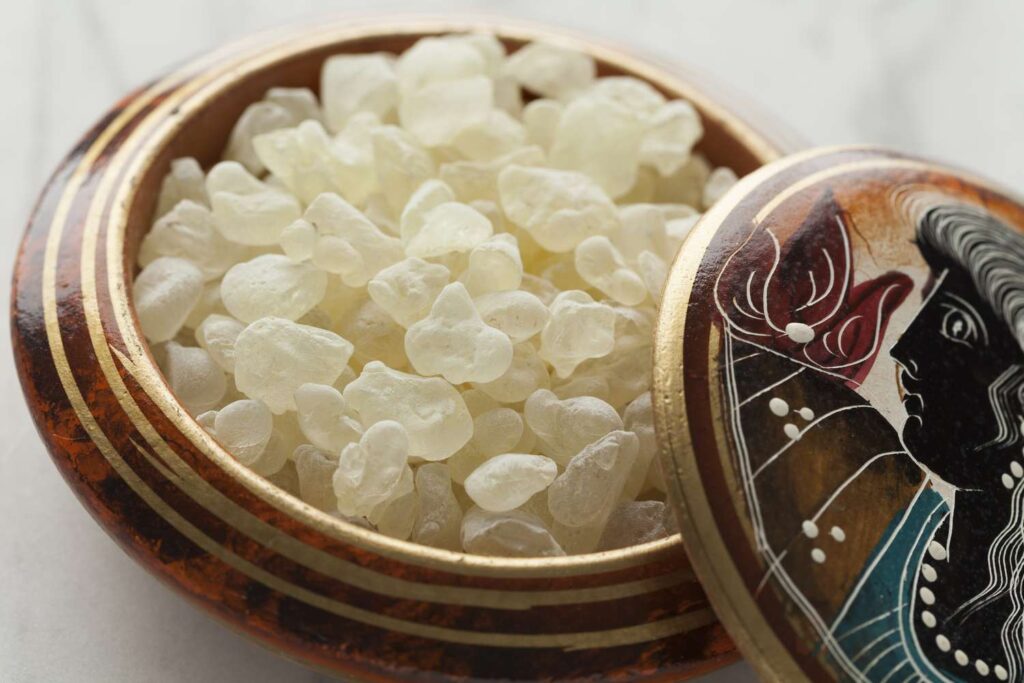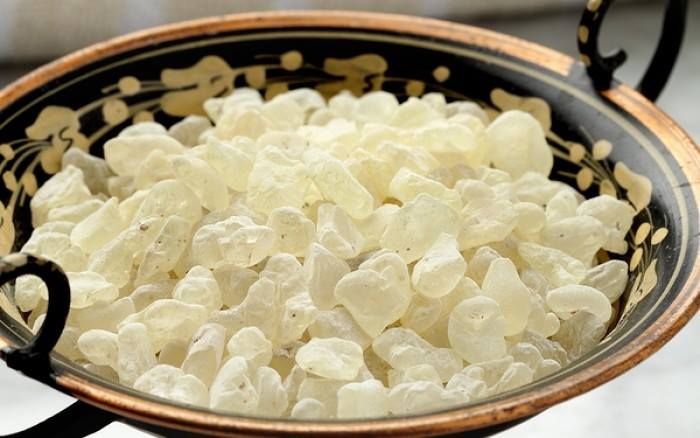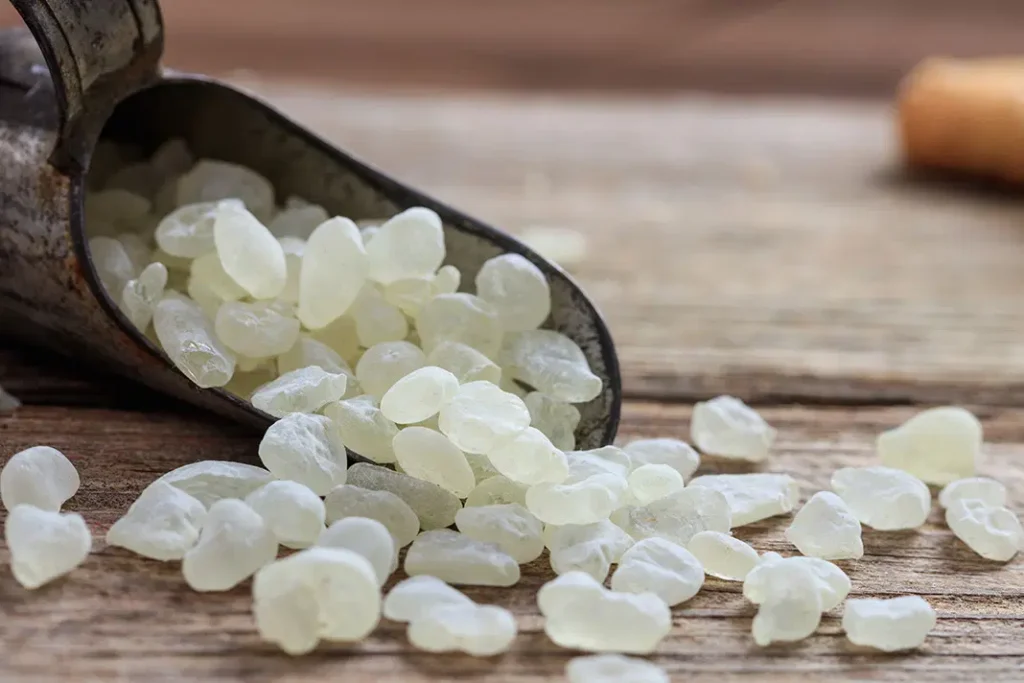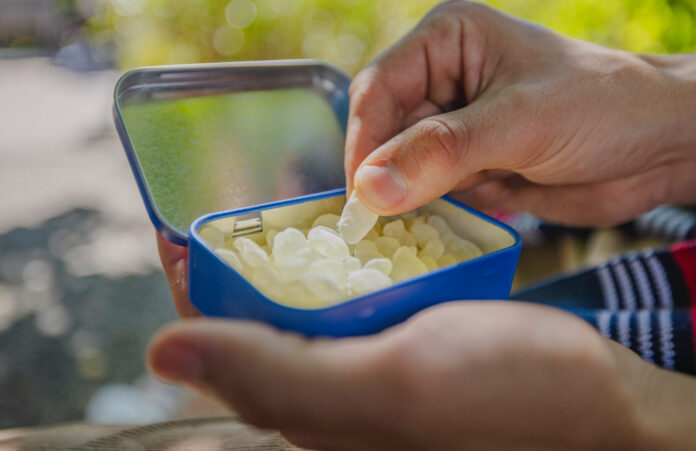Introduction :
Mastic gum is a natural resin obtained from the mastic tree (Pistacia lentiscus), primarily grown on the Greek island of Chios. For centuries, it has been prized for its unique aromatic properties, as well as its medicinal and culinary uses.Traditionally harvested by making incisions in the bark of the tree, the resin slowly hardens into tear-shaped droplets, often referred to as “tears of Chios.” Once solidified, the gum is collected, cleaned, and either chewed or processed into powder, capsules, or oils.

Arabic: المستكة الرومية (Al-Mastika ar-Roomiya)
Urdu: مستگی رومی (Mastagi Roomi)
Persian (Farsi): مصطکی رومی (Mastaki Rumi)
Hindi: मस्तगी रोमि (Mastagi Romi)
English: Roman Mastic / Chios Mastic Gum
Hebrew: מסטיקא רומאית (Mastika Romait)
Russian: Мастика Хиосская (Mastika Khioskaya)
Chinese (Mandarin): 希俄斯乳香胶 (Xī’é sī rǔxiāng jiāo)
Japanese: キオス島のマスティック (Kiosu-tō no Masutikku)
HEALTH BENEFITS:

Digestive Health
Helps with indigestion and heartburn
Mastic gum may reduce symptoms like bloating, discomfort, and acid reflux.
Kills H. pylori
Shown to have antibacterial properties against Helicobacter pylori, a bacterium linked to ulcers and gastritis.
May reduce stomach and intestinal inflammation
Helpful in conditions like Crohn’s disease and inflammatory bowel disease (IBD).
Oral Health
Fights bacteria that cause cavities and bad breath
Chewing mastic gum reduces oral bacteria and plaque.
Improves gum health
Anti-inflammatory and antimicrobial properties help prevent gum disease.
Liver Support

Supports liver function
Some studies suggest it may lower liver enzymes and improve liver health.
Antioxidant & Anti-inflammatory Effects
Rich in antioxidants
Helps combat oxidative stress and may support overall cellular health.
Reduces systemic inflammation
May benefit inflammatory conditions, including arthritis and metabolic disorders.
Cholesterol and Blood Sugar Control
May lower LDL (“bad”) cholesterol
Some research suggests it supports healthier lipid profiles.
Helps regulate blood sugar
May improve insulin sensitivity or glucose metabolism in some individuals.
Possible Anti-Cancer Effects (Preliminary)
Inhibits tumor growth (in lab studies)
Early studies suggest potential against certain cancers, though human evidence is limited.
Skin Health
Improves acne and skin clarity (topical use)
Mastic oil has antimicrobial properties beneficial for oily or acne-prone skin.
SIDE EFFECTS:

Gastrointestinal issues:
Some people may experience an upset stomach or nausea.
Headache and dizziness:
These are also potential side effects.
Pregnancy and Breastfeeding:
There is insufficient reliable information to know if mastic is safe during pregnancy or breastfeeding.
Medication Interactions:
Mastic may interfere with other medications you are taking.
Lack of Long-Term Research:
There is a lack of scientific evidence regarding the long-term safety of mastic, and it’s unclear if it’s safe for extended use.
Lack of Regulation:
Mastic supplements are not regulated by the FDA, so it’s important to purchase from a trustworthy manufacturer.
HOW TO USE:
1. For Digestive Issues (Indigestion, Gastritis, Reflux)
Form: Capsules or powder
How to Use:
Take 350–1000 mg of mastic gum daily.
Split the dose: One dose before breakfast, another before dinner.
Use on an empty stomach for best results.
Duration: Use for 4–8 weeks, then reassess.
2. To Kill H. pylori (Supports eradication)
Form: Capsules or powder
How to Use:
Take 1000 mg/day in divided doses (e.g., 500 mg in the morning, 500 mg at night).
Take on an empty stomach.
Optionally, combine with probiotics for added gut support.
Duration: 2–4 weeks minimum. Some regimens go up to 8 weeks.
Clinical studies have shown reduction or eradication in many cases.
Not a replacement for antibiotics if H. pylori is confirmed — consult a doctor for a full protocol.
3. For Oral Health (Cavities, Bad Breath, Gum Health)

Form: Mastic gum resin (natural chewing gum)
How to Use:
Chew 1 small piece (pea-sized) of mastic gum for 15–30 minutes, 2–3 times daily.
Spit it out after chewing — do not swallow the gum.
Long-term use is safe and effective for maintaining oral health.
4. For Liver, Cholesterol, or Blood Sugar Support
Form: Capsules
How to Use:
Take 500–1000 mg daily.
Can be taken with or without food.
Use consistently for at least 8–12 weeks to assess results.
5. For Skin (Acne, Oily Skin)
Form: Topical (mastic oil or creams)
How to Use:
Apply a diluted mastic oil or mastic cream to the skin 1–2 times daily.
Do a patch test first to avoid irritation.
Visible results may take 2–4 weeks.
TIPS & WARNINGS
Start low: If you’re new, begin with 250–500 mg/day to test tolerance.
Empty stomach use is best for gut-related issues.
Pregnancy/Breastfeeding: Avoid unless cleared by a doctor.
Allergies: Rare, but possible. Discontinue if you experience rash, itching, or GI upset.




